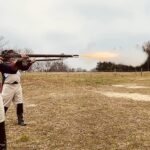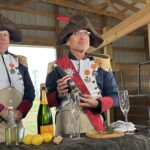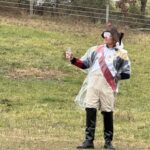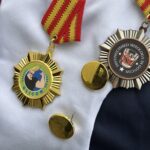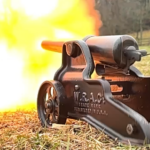Over the holidays, BTS made a big splash—literally—with our annual mixology video with the French 75 cannon taking center stage. Beyond the laughter, explosions, and “expertly mixed” cocktails, there’s a rich history behind the French 75 cannon and the drink it inspired. Judging from the video comments and countless text messages and mentions we received, we definitely sparked some interest with this years’ video and wanted to provide a deeper dive. So, here’s a little more background on this iconic artillery piece and its equally legendary namesake cocktail.
The French 75 Cannon: Innovation on the Battlefield
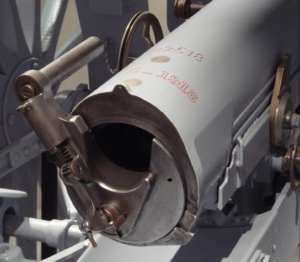 Introduced in 1897, the French 75 cannon revolutionized modern warfare. Known for its hydro-pneumatic recoil system, unprecedented accuracy, and rapid-fire capability, it quickly became a symbol of French military prowess. Capable of firing up to 30 rounds per minute, the French 75 earned its reputation as a game-changer in World War I, providing the Allies with a tactical edge that shaped the course of battle.
Introduced in 1897, the French 75 cannon revolutionized modern warfare. Known for its hydro-pneumatic recoil system, unprecedented accuracy, and rapid-fire capability, it quickly became a symbol of French military prowess. Capable of firing up to 30 rounds per minute, the French 75 earned its reputation as a game-changer in World War I, providing the Allies with a tactical edge that shaped the course of battle.
Its versatility and reliability kept it in use well into World War II—a testament to its enduring impact. Whether blasting enemy positions or inspiring awe on the battlefield, the French 75 was truly ahead of its time. 47 years is an incredible length of time for military technology to be consistently deployed and the French 75 exemplified both efficiently in outcomes and cost.
The development of the French 75 cannon was conducted under the strictest secrecy. All correspondence was kept confidential, no contracts were signed, and funds typically allocated for property acquisitions around Paris were discreetly “misdirected” to finance the project. This covert funding ultimately reached a cost of 300 million francs. But what exactly was the “secret sauce” that was so vital to the design?
At the heart of the revolutionary weapon was its innovative recoil system. Beneath the gun’s barrel lay a cradle housing two hydraulic cylinders: the upper cylinder contained hydraulic fluid, while the lower cylinder held compressed gas. These cylinders were connected by a port, with a floating piston ensuring the separation of gas and fluid. When the gun fired, the fluid was forced through the port into the second cylinder, compressing the gas and absorbing the recoil energy. Once the energy was expended, the gas pushed against the floating piston, returning the fluid to the first cylinder and resetting the gun with remarkable smoothness.
Even after the French 75 entered service with the French Army, secrecy surrounding its design was rigorously maintained. The floating piston, a critical component, was of particular interest to those seeking to replicate the cannon’s capabilities. Its unique sealing mechanism, which prevented the mixing of hydraulic fluid and gas, was so vital that French artillery officers were explicitly prohibited from gaining detailed knowledge of its construction. They were not even permitted to see the piston when it was disassembled from the gun. This obsessive attention to secrecy ensured the 75’s groundbreaking design remained a closely guarded military advantage.
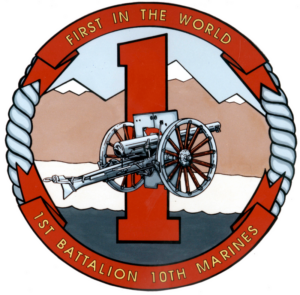 The French 75 cannon saw widespread use across numerous nations, including France, Belgium, the United States, Poland, Romania, Serbia, Spain, Portugal, Finland, Mexico, and the United Kingdom, among others. Its adoption by so many countries made it a key artillery piece for the Allied powers during World War I and subsequent conflicts.
The French 75 cannon saw widespread use across numerous nations, including France, Belgium, the United States, Poland, Romania, Serbia, Spain, Portugal, Finland, Mexico, and the United Kingdom, among others. Its adoption by so many countries made it a key artillery piece for the Allied powers during World War I and subsequent conflicts.
Want to check out some original photos and notes of the French 75 as part of the 10th Marine Regiment? Check out this overview here.
The French 75 Cocktail: An Ode to Power and Precision
The French 75 cocktail shares more than just a name with its artillery counterpart. Created in Paris by bartender Henry Tépé (there is of course dispute around this), the drink became synonymous with the firepower and impact of the cannon itself. Equal parts elegant and potent, the combination of gin, lemon juice, simple syrup, and champagne delivers a mix as unforgettable as its namesake.
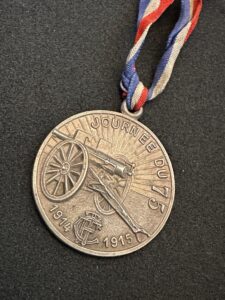
The drink’s reputation spread quickly, making its first U.S. appearance in 1915 and becoming a staple for those seeking a sophisticated yet daring cocktail experience. Just as the cannon changed the battlefield, the French 75 cocktail redefined what a great drink could be—a perfect mix of precision and panache. And hey, it has even surpassed the length of time in service far beyond the cannon- 110 years and counting!
Launching Cocktails from Cannons
Since we can’t leave well enough alone, we took the French 75 cocktail to the next level, combining our appreciation for history with our flair for the extraordinary. Has any other company in our space launched a cocktail from a cannon? We think not.
We hope that we’ve captured some of the spirit of innovation and fun that defines both BTS and bartending. Keep an eye out for more stories, history, and maybe even another splash or two in the future!
Gallery
Archival Footage Credits
- https://archive.org/details/AmericaG1918_3
- https://en.wikipedia.org/wiki/File:Visite_de_l%27%C3%A9mir_Fay%C3%A7al_au_camp_de_Satory_1932_-_05.jpg
- https://en.wikipedia.org/wiki/File:Canon_de_75_back.jpg
- https://en.wikipedia.org/wiki/File:Canon_de_75_breech_mechanism.jpg
- https://www.history.army.mil/museums/Arms-and-Ordnance/documents/Collections/Ordnance/TM-9-306-M-1897A4-75mm-Mounted-in-Combat-Vehicles-(June-1943).pdf
- https://www.si.edu/object/battery-french-75s:nmah_448066
- https://commons.wikimedia.org/wiki/File:0_Canon_de_75_mm_mod%C3%A8le_1897_-_Mus%C3%A9e_de_l%27arm%C3%A9e_%C3%A0_Paris_2.JPG
Contact BTS to explore solutions for your intelligence or defense challenges.


